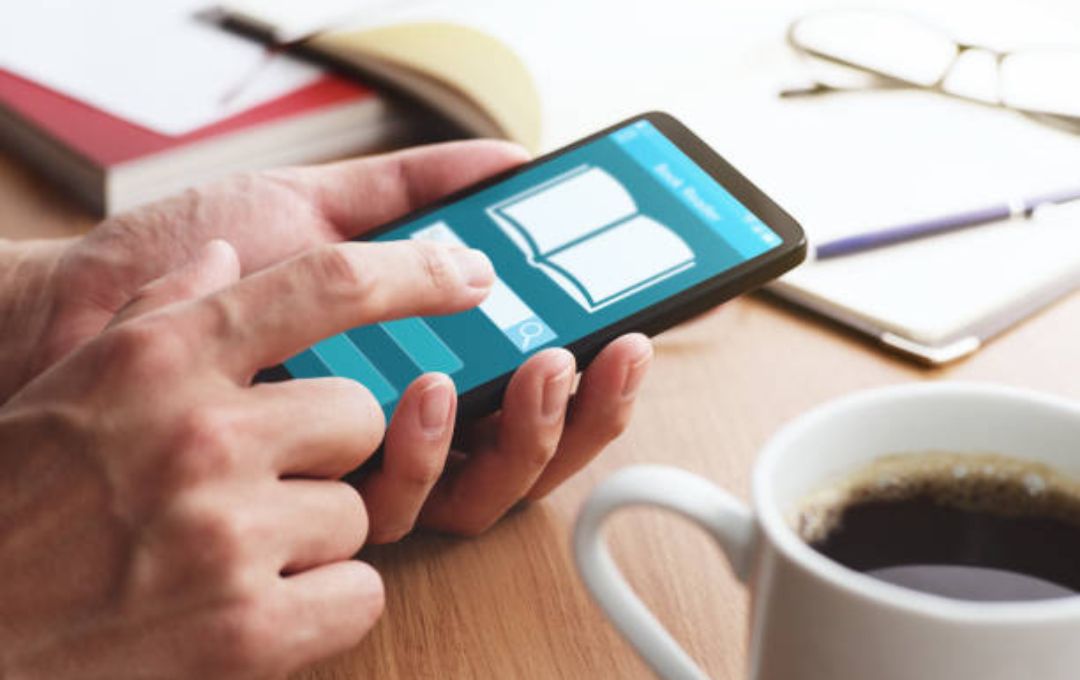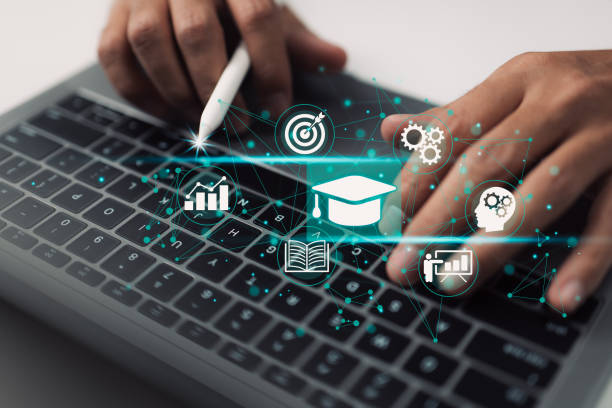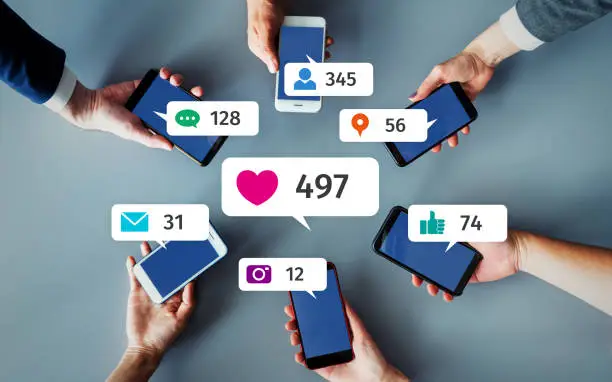An Introduction to Mobile Learning Platforms

Mobile learning platforms have emerged as a transformative tool for education and training. These innovative platforms leverage the power of mobile devices, such as smartphones and tablets, to deliver engaging and accessible learning experiences. By harnessing the ubiquity of mobile technology, mobile learning platforms have the potential to revolutionize the way we acquire knowledge and skills.
Read: From Learning to Leading: Educational Foundations for Superior Project Management
What is a Mobile Learning Platform?
A mobile learning platform is a comprehensive system designed to facilitate learning and training through mobile devices. These platforms offer a wide range of features and functionalities that cater to the needs of learners, educators, and organizations. They provide a user-friendly interface, interactive content, and seamless access to learning materials, allowing learners to engage with educational content anytime, anywhere.
Key Features of Mobile Learning Platforms
Mobile learning platforms typically offer a variety of features that enhance the learning experience. Some of the key features include:
1. Responsive Design
Mobile learning platforms are designed with responsive layouts that adapt to different screen sizes and devices. This ensures that the learning content is easily accessible and visually appealing on both mobile and desktop devices.
2. Interactive Content
Mobile learning platforms offer interactive content, such as videos, animations, quizzes, and simulations, to engage learners and reinforce key concepts. These interactive elements help to keep learners engaged and motivated throughout the learning process.
3. Gamification
Many mobile learning platforms incorporate gamification elements, such as points, badges, and leaderboards, to create a fun and competitive learning environment. Gamification can help to increase learner engagement and motivation, making the learning process more enjoyable and effective.
4. Offline Access
Some mobile learning platforms offer offline access to learning materials, allowing learners to download content and access it even when they don’t have an internet connection. This feature is particularly useful for learners in areas with limited internet access or for those who prefer to learn on the go.
5. Personalized Learning
Mobile learning platforms can provide personalized learning experiences based on individual learner preferences, goals, and progress. By analyzing learner data and behavior, these platforms can adapt the learning content and recommendations to suit each learner’s unique needs.
Benefits of Mobile Learning Platforms
Mobile learning platforms offer numerous benefits for learners, educators, and organizations:
1. Increased accessibility: Mobile learning platforms make learning more accessible by allowing learners to access educational content anytime, anywhere, using their mobile devices.
2. Improved engagement: Interactive content and gamification elements in mobile learning platforms can help to increase learner engagement and motivation, leading to better learning outcomes.
3. Personalized learning: Mobile learning platforms can provide personalized learning experiences tailored to individual learner needs, preferences, and goals.
4. Cost-effective: Compared to traditional classroom-based training, mobile learning platforms can be more cost-effective for organizations, as they eliminate the need for physical classrooms and travel expenses.
5. Scalability: Mobile learning platforms can easily scale to accommodate a large number of learners, making them suitable for organizations with a wide reach or a large workforce.
How does a mobile learning platform enhance educational experiences
Mobile learning platforms significantly enhance educational experiences by providing flexibility, engagement, and accessibility. Here are the key ways they achieve this:
Flexibility and Convenience
Mobile learning platforms allow learners to access educational materials anytime and anywhere, accommodating busy schedules. This flexibility enables individuals to learn at their own pace, fitting education into their daily routines, which is particularly beneficial for working professionals and students in remote areas.
Improved Engagement
These platforms often utilize interactive content, such as gamification and multimedia, to keep learners engaged. Features like quizzes and simulations enhance motivation, leading to better retention of information and a more enjoyable learning experience. Research indicates that mobile learning can improve knowledge retention by up to 55% compared to traditional methods.
Increased Accessibility
Mobile learning platforms break down barriers to education by providing access to individuals who may not have the opportunity to attend traditional classrooms. This is especially crucial for learners in underserved communities or those with mobility challenges. With 24/7 access to learning materials, users can engage with content whenever it suits them.
Cost-Effectiveness
Mobile learning reduces the need for physical classrooms and materials, resulting in significant cost savings for educational institutions and organizations. As mobile devices become more affordable, the overall cost of implementing mobile learning solutions continues to decrease.
Enhanced Collaboration
These platforms foster collaboration among learners through features like discussion boards and group projects. This real-time communication helps build a sense of community, even when participants are geographically dispersed.
How can mobile learning platforms be integrated into traditional classrooms
Integrating mobile learning platforms into traditional classrooms can enhance educational experiences and engagement. Here are effective strategies for this integration:
1. Blended Learning
Combining online and face-to-face instruction allows students to access learning materials via mobile devices outside the classroom. This flexibility supports personalized learning and helps students reinforce concepts at their own pace, making the learning experience more dynamic and engaging.
2. Flipped Classroom Model
In this approach, students learn new content at home through mobile learning platforms and engage in interactive activities in class. This method shifts the focus from traditional lectures to collaborative tasks, fostering deeper understanding and participation during classroom time.
3. Interactive Activities
Utilizing mobile learning platforms for interactive quizzes, polls, and discussions can increase student engagement. These platforms enable real-time feedback and encourage participation, transforming the classroom into a more interactive learning environment.
4. Teacher Training
To effectively integrate mobile learning platforms, educators must be trained in using these technologies. Professional development programs should focus on pedagogical strategies that incorporate mobile learning, ensuring teachers feel confident in utilizing these tools.
5. Parental Involvement
Engaging parents in the mobile learning process can enhance student success. Schools should communicate the benefits and expectations of mobile learning, providing resources and support to help parents assist their children.
6. Addressing Challenges
Challenges such as distractions and multitasking must be addressed. Establishing clear guidelines for device usage and creating a structured environment can help mitigate these issues, ensuring that mobile learning platforms are used effectively in the classroom.
How can teachers effectively manage the use of mobile devices in class
To effectively manage the use of mobile devices in class, teachers can implement several strategies:
1. Establish an Acceptable Use Policy
Creating a clear Acceptable Use Policy is essential. This policy should outline what is permissible regarding mobile device usage, including guidelines for social media, internet content, and classroom behavior. Communicating these rules helps students understand expectations and consequences for misuse.
2. Utilize Mobile Device Management (MDM)
Investing in a Mobile Device Management (MDM) system allows teachers to monitor and control device usage. MDM can restrict access to distracting apps and websites, ensuring students stay focused on educational tasks. It also enables real-time tracking of device activity, helping identify potential distractions.
3. Engage Students in the Conversation
Involving students in discussions about mobile device use fosters a sense of responsibility. Teachers can ask students about their experiences and preferences regarding technology, which can help develop a collaborative approach to managing devices in the classroom.
4. Implement a Stoplight Management System
Using a stoplight system can help regulate device use. For example, a red light indicates no phone use, yellow allows limited use, and green signals active use for learning activities. This visual cue helps students understand when they can use their devices appropriately.
5. Move Around the Classroom
Teachers should actively monitor student engagement by moving around the classroom. This presence can deter off-task behavior and encourage students to stay focused on their tasks.
What are some creative ways to incorporate mobile devices into lesson plans
Incorporating mobile devices into lesson plans can enhance engagement and learning outcomes. Here are some creative strategies:
1. Create a Classroom Hub
Establish an online classroom hub using platforms like Google Classroom or Weebly. This allows students to access assignments, resources, and collaborate on projects anytime, fostering a continuous learning environment.
2. Use Gamified Learning
Integrate gamified apps such as Kahoot! or Quizizz for interactive quizzes and review sessions. These platforms make learning fun and competitive, encouraging participation through mobile devices.
3. Conduct Scavenger Hunts
Organize QR code scavenger hunts where students use mobile devices to scan codes that lead them to different tasks or information. This adds an element of excitement and exploration to the learning process.
4. Encourage Multimedia Projects
Have students create videos or podcasts on topics related to the curriculum. This not only enhances their understanding but also develops their digital literacy and creativity.
5. Facilitate Real-World Connections
Utilize mobile devices for students to capture images or videos of real-world examples related to class topics. Sharing these in class can spark discussions and make learning more relevant.
6. Implement Flipped Classroom Techniques
Assign video lectures or reading materials for homework, allowing class time for discussions and hands-on activities. This approach maximizes classroom interaction and deepens understanding.
7. Use Interactive Surveys
Leverage tools like Google Forms to create interactive surveys or quizzes. This provides immediate feedback and allows students to engage with the material actively.
8. Foster Collaboration with Apps
Encourage collaboration through apps like Padlet or Google Docs, where students can work together on projects in real-time, regardless of their location.
Conclusion
Mobile learning platforms have the potential to transform the way we approach education and training. By leveraging the power of mobile technology, these platforms offer a flexible, engaging, and accessible learning experience that can benefit learners, educators, and organizations alike. As technology continues to evolve, it is likely that mobile learning platforms will become an increasingly integral part of the educational landscape.





